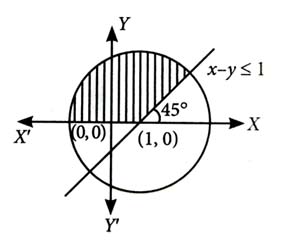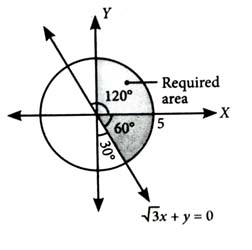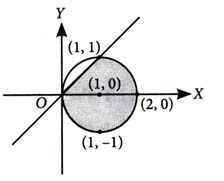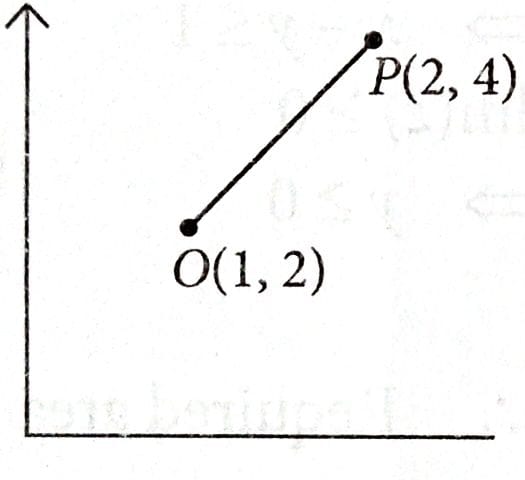Topic Question Set
Q 1
:
If are two distinct complex number such that , then [2024]
lies on a circle of radius and lies on a circle of radius 1.
either lies on a circle of radius 1 or lies on a circle of radius
both and lie on the same circle.
either lies on a circle of radius or lies on a circle of radius 1.
(2)
We have,
Q 2
:
Let and respectively be the modulus and amplitude of the complex number then is equal to [2024]
(2)
We have,
So,
Q 3
:
Let the complex numbers and lie on the circles and respectively, where Then, the value of is ________. [2024]
(20)
Given ...(i)
...(ii)
lies on (i),
...(iii)
lies on (ii)
...(iv)
From (iii) and (iv), we get
Q 4
:
If denotes the number of solutions of and where then the distance of the point from the line is __________ [2024]
(3)
We have,
and where
and
Now, the distance of point from the line is given by
Q 5
:
The area (in sq. units) of the region
is [2024]
(2)

Q 6
:
Let , and Then the area of the region is : [2024]
(1)

...(i)
...(ii)
...(iii)
Q 7
:
The sum of the square of the modulus of the elements in the set is ____________. [2024]
(9)

Q 8
:
Let z be a complex number such that |z| = 1. If , then the maximum distance of from the circle |z – (1 + 2i)| = 1 is : [2025]
-
3
-
2
(3)
We have,
[]
[]

The centre of the given circle is (1, 2) and its radius is 1.
Now, .
Maximum distance = .
Q 9
:
If are the vertices of an equilateral triangle, whose centroid is , then is equal to [2025]
0
i
– i
1
(1)
Centroid of triangle is , then
[ For equilateral ]
Now,
.
Q 10
:
If the locus of , such that , is a circle of radius r and center (a, b), then is equal to: [2025]
12
16
24
18
(4)
We have,
Let z = x + iy
.

